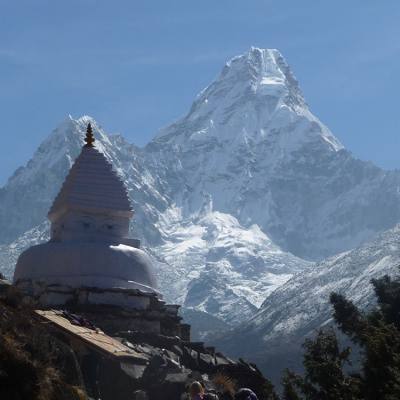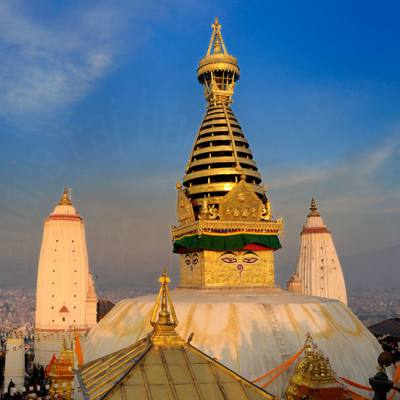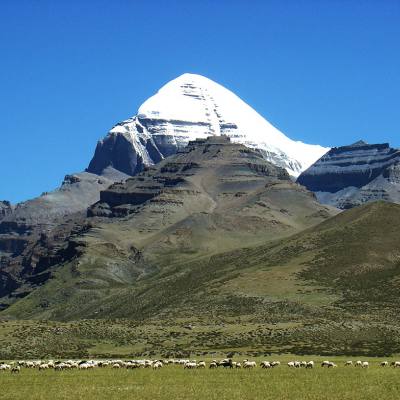The Buddha was born in Nepal in a holy place called Lumbini about 290 km south-west from Kathmandu. It is Lumbini, although a small place, carries a highly emotional value for all those who love the Buddha and Buddhism. About 2,500 years ago, it is Lumbini from where an extra ordinary human being emerged and directly addressed the sufferings of the humanity. It is none other than the Buddha himself. He is rightly honoured by the title ‘Light of Asia’. His discovery of ever practical the Four Noble Truths and the Eightfold Paths to Nobility was the greatest help to the humanity.
The Buddha, in fact, did not try to propound a separate religion. He just wanted to teach a special way of life developed through his rigorous personal practices that could ultimately lead the human beings to peace and happiness. The same way of life was later turned into the Buddhism with several branches like Hinayana (Theravada), Mahayana, Bajrayana, Lamaism (Tibetan Buddhism), etc.
Come to Nepal! Come to Lumbini, the birthplace of Lord Buddha! You will be fascinated to understand why Buddhism is getting more and more popular in the world!
What is Buddhism?
Buddhism is more than a religion or even more than a philosophy. When Buddha started teaching his followers, he never meant to propound a religion at all. The Buddha’s 45 year long teaching is very vast. However the basic concept of the Buddhism can be summed up by the Four Noble Truths and the Eight Paths to Nobility. This is the life changing discovery he made when he got enlightened under the Bodhi tree.
- The First Noble Truth: Life is suffering.
- The Second Noble Truth: There is a cause for every suffering. The root cause of all suffering is a desire.
- The Third Noble Truth: There are means to put an end to all desires.
- The Forth Noble Truth: The end of desire (thirst) brings true happiness in life.
Here, it is relevant to know what a desire is in its real sense. It is simply the thirsts of the physical body and the illusions of worldly passion. These thirsts and illusions are found to be deeply rooted in the intense desires of physical beings. The worst cum worst result of the strong desire may lead one even to death. This is the truth well pointed out by the Buddha behind every desire.
How can we end our desire to bring the true happiness in our life? To enter into a state where there is no desire and suffering, one must follow a certain path. The Buddha demonstrated the Eightfold Noble Paths. The paths are: Right View, Right Thought, Right Speech, Right Behaviour, Right Livelihood, Right Effort, Right Meditation and Right Concentration.
One who wishes to escape from suffering and achieve true happiness, he must follow above mentioned eight paths. One who follows the eight paths can attain a state where there is no desire and illusion leading to the another state of enlightenment. It is possible only when we follow the discipline of the Eightfold Paths to Nobility.
Who Was the Buddha?
The Buddha’s real name was Siddhartha Gautam, who was the only son of a king famous by the name of Suddhodan. Siddhartha was born in around 600 BC in Lumbini, now located in Nepal, the capital of Nepal. After realizing the pros and cons of wealth and luxurious life, he came to a conclusion that the wealth and luxury with unlimited amenities are not the source of peace and happiness.
At the age of 29, he abandoned his royalty, his beautiful wife and a newly born son and took the life of renunciation. He started exploring the teachings behind different religions and philosophies towards his pursuit of finding the ultimate means to human happiness. This pursuit was not easy. He used all different means including months long fasting to find out the ultimate answer to his question.
After six years of rigorous study and meditation, one day he finally found the truth behind the happiness and got enlightened under a ‘Bodhi tree’. Then after, Sidhartha Gautam was called the Buddha. The Buddha is the title given to him that means ‘the enlightened’. The Buddha dedicated the rest of his life until his death at the age of 80 in teaching his principles discovered by his rigorous practice and personal experience. Later, people preferred to call his principles the Buddhism.

 98510 22507 (Mahendra)
98510 22507 (Mahendra)
 tktreks@gmail.com
tktreks@gmail.com



